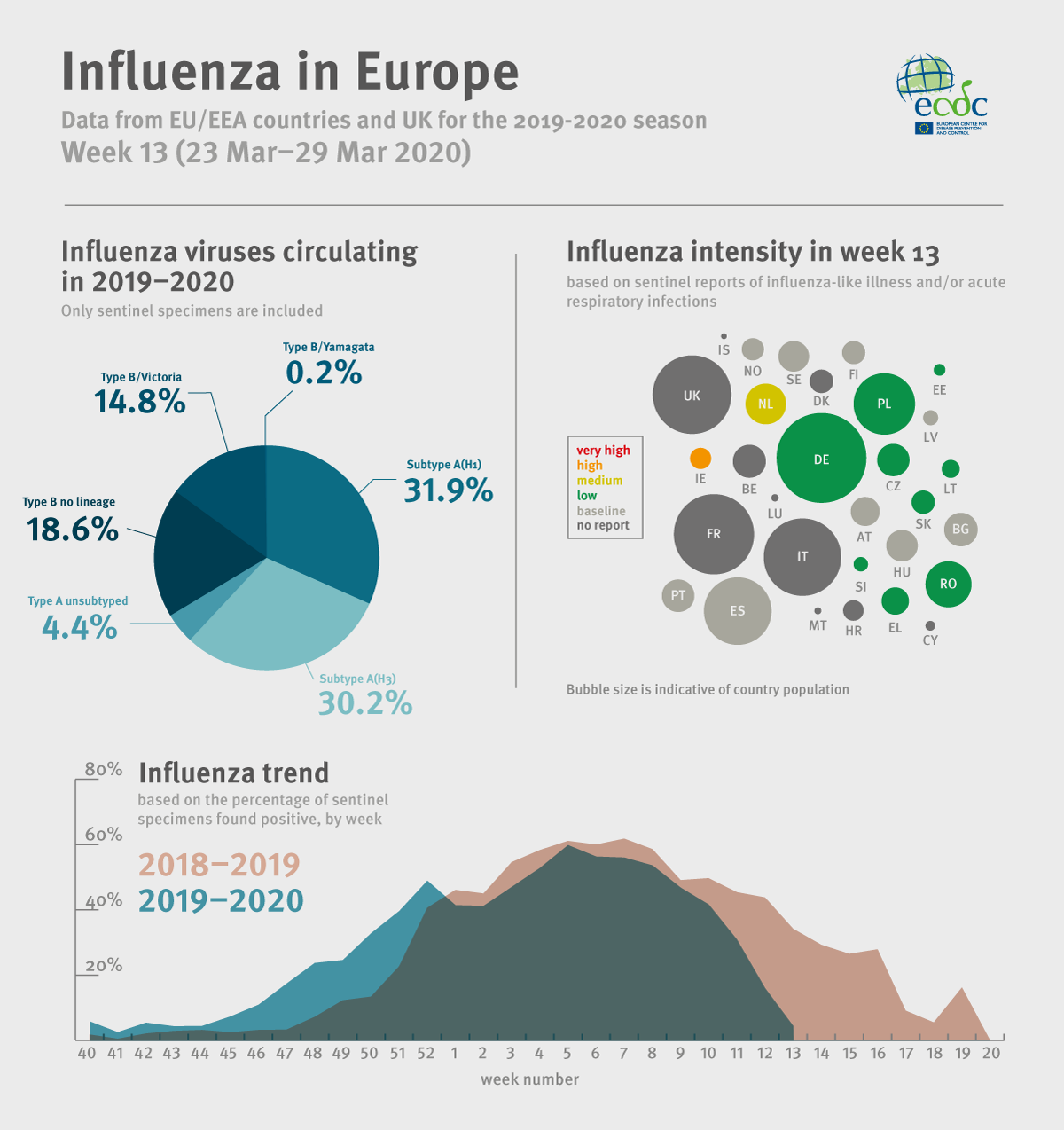Europe’s flu season had two peaks this year: one at the tail end of 2019 and another in week five of 2020. The number of cases detected and reported began to fall sharply throughout March, suggesting a much shorter flu season than usual.

However, this data must be approached with caution. While it appears that this year’s flu season started earlier than the 2018/2019 season – and probably did end earlier as a result – March was also the month when Europe’s health systems began to battle an infectious disease outbreak on a scale unprecedented in our lifetimes.
Data compiled by the ECDC and the WHO Regional Office for Europe show that no country in Europe is reporting widespread influenza activity and that the peak lasted just two weeks (compared to six weeks the previous year).
Authorities note that the COVID-19 outbreaks are affecting hospital systems and testing capacities across the continent. ‘Therefore the data we present must be interpreted with caution,’ experts say.

Health systems have been ramping up testing and lab capacity, despite challenges sources equipment, reagents and personnel in some countries. This has made routine activities, including testing and reporting data on flu-like illnesses, secondary.
The available data show that excess mortality showed a marked increase in all participating countries, but this is likely to be related to the COVID-19 pandemic rather than flu. Many of those worst affected by the novel coronavirus are also hardest hit by flu – particularly older people, healthcare workers, and those with underlying conditions such as diabetes, hypertension and heart failure.
‘Vaccination remains the best possible method for prevention of influenza and/or reducing the risk of serious complications,’ the report states. Most countries in Europe have committed to vaccinating at least 75% of people aged 65 and older. However, none has achieved this target.
Read: Did your country reach its flu vaccine target?





Pingback
June 25th, 2020
[…] COVID-19 did not start out in Europe until eventually halfway via their cold and flu period. […]